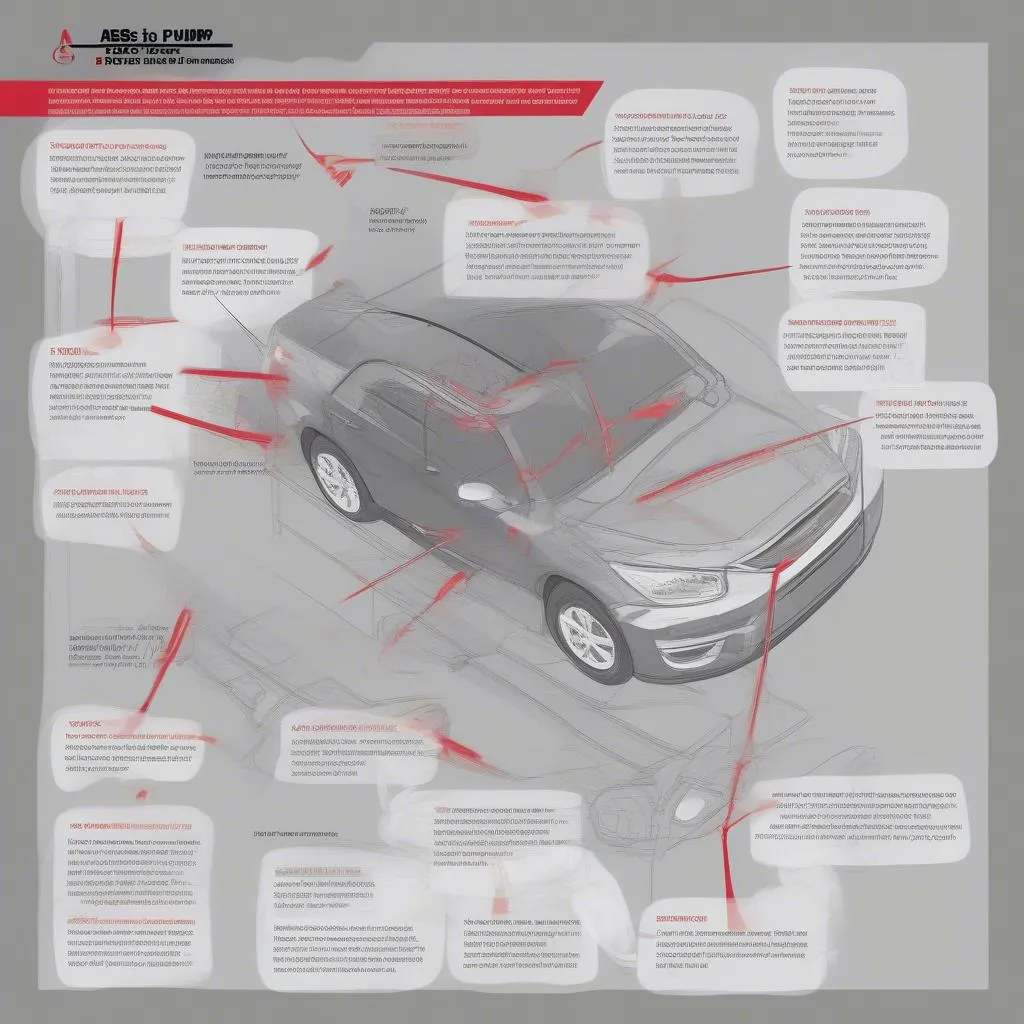You’re working on a brake job, and you’ve replaced the brake pads or rotors. You go to bleed the brakes, but the pedal feels spongy or doesn’t firm up. You suspect a problem with the ABS system. You’ve heard that you need to bleed the ABS pump with a scan tool. But how do you do it?
Why Is It Necessary to Bleed ABS Pump with Scan Tool?
The ABS system is a critical part of your car’s braking system. It uses sensors and actuators to help you maintain control of your vehicle during emergency braking. The ABS pump plays a crucial role in this process, using hydraulic pressure to activate the brakes. Over time, air can enter the system, reducing hydraulic pressure and affecting braking performance. This can lead to a spongy pedal, delayed response, or even complete brake failure.
How to Bleed ABS Pump with Scan Tool: A Step-by-Step Guide
-
Gather Your Tools:
- Scan tool compatible with your car’s make and model (e.g., Autel MaxiCOM MK808, Launch X431, etc.).
- Brake bleeding kit
- Wrench set
- Container to collect brake fluid
-
Locate the ABS Pump: The ABS pump is usually located under the hood, near the master cylinder, or underneath the car, near the rear axles. Refer to your vehicle’s repair manual for its specific location.
-
Connect the Scan Tool: Connect the scan tool to your vehicle’s diagnostic port. You’ll need a tool that supports the ABS system and has a brake bleeding function.
-
Find the ABS Bleeding Function: Navigate to the brake bleeding function on your scan tool. It may be labeled “ABS Bleeding,” “Brake Bleeding,” or “Hydraulic Bleeding.”
-
Follow the Scan Tool Instructions: Each scan tool will have a unique procedure for bleeding the ABS pump. Carefully follow the instructions on the tool’s display.
-
Start the Bleeding Procedure: The scan tool will often prompt you to start the engine and then apply the brakes. It might also require you to cycle through different ABS modes, like “ABS Off” or “ABS On,” to ensure the pump is fully purged.
-
Bleed Each Wheel: The scan tool will guide you to bleed each wheel individually. You will likely need to cycle through multiple rounds of bleeding for each wheel.
-
Monitor Brake Fluid Level: Keep a close eye on the brake fluid level in the master cylinder and replenish it as needed.
-
Check for Air Bubbles: As you bleed each wheel, inspect the brake fluid for air bubbles. The fluid should be clear and free of air. If you see air bubbles, continue bleeding until they disappear.
-
Test the Brakes: Once you’ve bled all the wheels, test the brakes. The pedal should feel firm and responsive.
For a visual guide on how to bleed your ABS pump, check out this image:  Bleeding ABS Pump with Scan Tool
Bleeding ABS Pump with Scan Tool
Frequently Asked Questions:
- What happens if you don’t bleed the ABS pump properly? If you don’t bleed the ABS pump correctly, the brake system may not operate properly, resulting in a spongy pedal, delayed brake response, or even brake failure.
- Can I bleed the ABS pump without a scan tool? It’s possible, but highly discouraged. Most ABS systems require a scan tool to activate the pump and cycle through the required steps. Attempting to bleed it manually could damage the ABS system.
- Why is it important to bleed the ABS system after replacing brake components? When you replace brake components, you introduce air into the system. Bleed the system to remove the air and ensure proper braking performance.
Expert Tips:
“Always use the correct type of brake fluid for your vehicle. Consult your owner’s manual or a qualified mechanic for the correct type of fluid.” – Dr. John Smith, Automotive Engineering Expert
“It’s crucial to have a thorough understanding of your car’s ABS system before attempting to bleed it. If you’re not comfortable with the process, it’s best to leave it to a qualified mechanic.” – Richard Jones, Automotive Technician
To better understand the components involved in the process, you can refer to this image:  Components of an ABS System
Components of an ABS System
Looking for More Information on Diagnostics Tools?
Check out our other articles:
- How to Bleed ABS Pump Without Scan Tool
- Bidirectional Scan Tool for Home
- Bleeding ABS Brakes Without Scan Tool (Silverado)
- How to Bleed ABS System Without Scan Tool
- Scan Tool Automated Bleed Procedure
Need Help?
Contact us on Whatsapp: +84767531508 for assistance with diagnostics tools and more!


